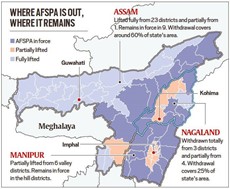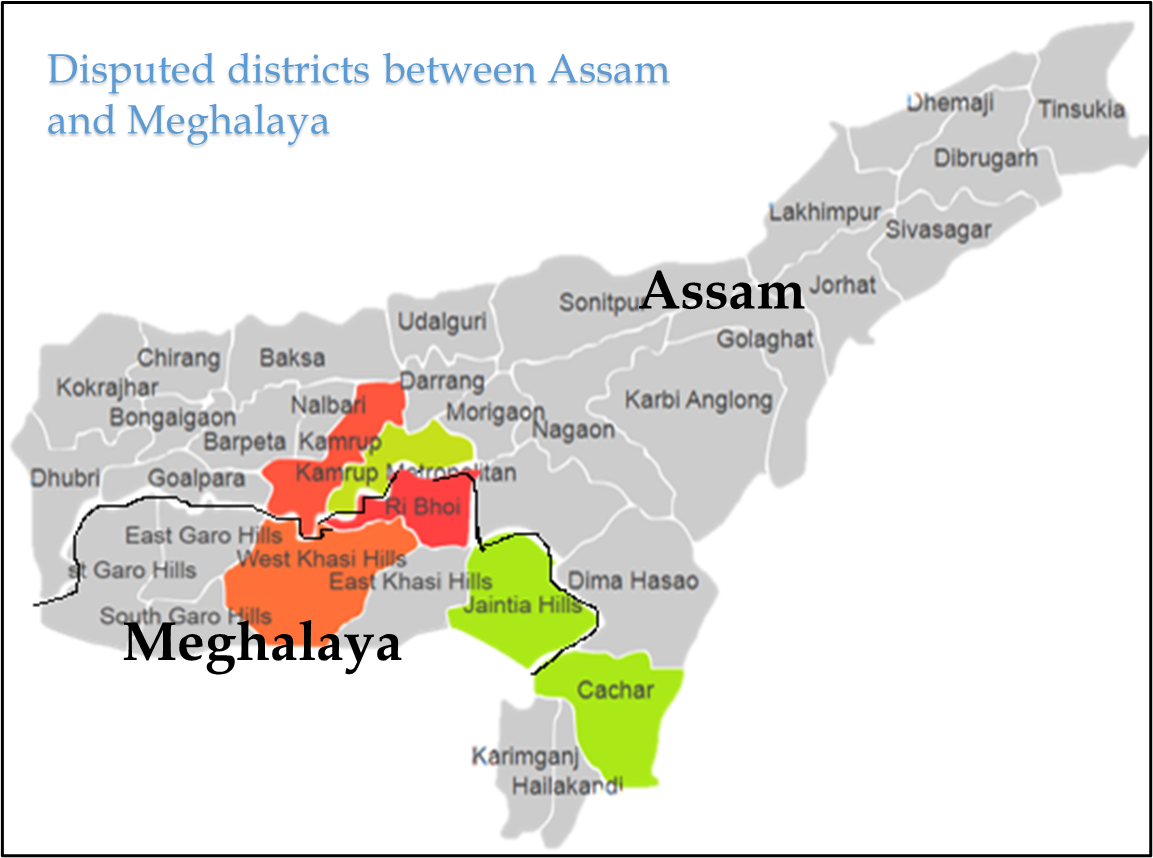Thursday, 10th March 2022
UPI123Pay
In News
Reserve Bank of India (RBI) has recently launched a new UPI service “123PAY” with an aim to help almost 40 crore feature phone users in the country.
About the News
- UPI has played a major role in the adoption of digital payments in India, recording about 4.53 billion transactions worth ₹8.26 trillion in February 2022 and a total value of UPI transactions of ₹41 trillion in FY21.
- India has a mobile phone consumer base of about 118 crores, of which about 74 crore have smartphones, indicating that there is a significant number of feature phone users in the country.
- Feature phones are basic phones, which typically provide voice calling and text messaging
- Although UPI was previously available on feature phones, albeit through a complicated USSD or Unstructured Supplementary Service Data mode.
What are the important features of the UPI 123PAY?
- Leveraging feature phones: It will work on simple phones and does not require an internet connection.It is aimed to help feature phone users make digital payments easily.
- Functioning: 123PAY is a three-step method to initiate and execute UPI transactions for users.
- Methods of payment: The feature will allow users to make transactions through feature phones in four different ways
- Interactive Voice Response (IVR) numbers: One can dial a number and initiate a secured call from feature phone, and after getting registered can start financial transactions without internet
- Apps on feature phones: Majority of UPI functions will be available on apps that are available on feature phones and one can do almost all kinds of UPI transactions except scan and pay, which is still a work in progress.
- Proximity sound-based payments: It will use sound waves to enable networking and therefore helps carry out contactless offline and proximity data communication on any device.
- Missed call: Through missed calls, users to receive a call-back from a standard number to authenticate and carry out transactions.
- Uses: Using the 123PAY feature you can make payments, recharge FAST Tags for vehicles, pay utility bills and check account balance that is linked with UPI. Apart from that, the new feature will also allow users to set or change their UPI PINs.
- Grievance redressals: a 24x7 helpline for digital payments has been launched by National Payments Corporation of India (NPCI) with an aim to support 123PAY. Users can also visit digisaathi.info from their phones for their queries on digital payments and grievances.

Why is it important?
- Improve financial inclusion: The launch of UPI123Paymakes the facilities under UPI now accessible to that section of the society which was so far excluded from the digital payments landscape.
- User-friendly interface: Previously, a feature phone user had to dial *99#, get a set of menus and initiate transactions. But the process was cumbersome, involving multiple chargeable messages. 123PAY will help fill in this gap and take UPI to the next level.
Sources:
Democracy Report 2022
In News
Sweden’s V-Dem Institute has released a report titled ‘Democracy Report 2022: Autocratisation Changing Nature?’ which states that the level of democracy enjoyed by the average global citizen in 2021 is down to 1989 levels.
About the Report
- The V-Dem report classifies countries into four regime types based on their score in the Liberal Democratic Index (LDI):Liberal Democracy, Electoral Democracy, Electoral Autocracy, and Closed Autocracy.
- The LDI captures both liberal and electoral aspects of a democracy based on 71 indicators that make up the Liberal Component Index (LCI) and the Electoral Democracy Index (EDI).
- The LCI measures aspects such as protection of individual liberties and legislative constraints on the executive, while the EDI considers indicators that guarantee free and fair elections such as freedom of expression and freedom of association.

Findings of the report
- Democracy on the decline: The level of democracy enjoyed by the average global citizen in 2021 is down to 1989 levels. The last 30 years of democratic advances are now eradicated.
- Liberal democracies peaked in 2012 with 42 countries and are now down to the lowest levels in over 25 years – 34 nations home to only 13% of the world population.
- More than twice as many countries (32) are undergoing autocratisation as are witnessing democratisation (15).
- Dictatorships on the Rise:Electoral autocracy remains the most common regime type and harbors 44% of the world’s population, or 3.4 billion people.
- The increasing number of closed autocracies – up from 25 to 30 countries with 26% of the world population – contributes to the changing nature of autocratization.
- Differences across Democratic Values:Across regions, elections are the aspect of democracy with the highest average improvement among democratizers.
- Many democratizing countries made the greatest improvements in judicial constraints on the executive – making leaders more accountable than a decade ago.
- A record of 35 countries suffered significant deteriorations in freedom of expression at the hands of governments – an increase from only 5 countries 10 years ago.
- Changing Nature of autocratisation:Signalling a changing nature of autocratization, polarization is increasing to toxic levels in 40 countries.
- Toxic polarisation is defined as a phenomenon that erodes respect of counter-arguments and associated aspects of the deliberative component of democracy.
- Toxic levels of polarization contribute to electoral victories of anti-pluralist leaders and the empowerment of their autocratic agendas.
- Governments increasingly use misinformation to shape domestic and international opinion.
- Repression of civil society, diminishedrespect for counterarguments and censorship of media were other favoured tools of autocratising regimes.
State of democracy in India:
- The report identifies India as an ‘electoral autocracy’ rather than a democracy, ranking it 93rd on the liberal democracy index, out of 179 countries among the bottom 50% of countries.
- It has slipped further down in the Electoral Democracy Index, to 100, and even lower in the Deliberative Component Index, at 102. In South Asia, India is ranked below Sri Lanka (88), Nepal (71), and Bhutan (65) and above Pakistan (117) in the LDI.
Sources:
Rules for deputation of DIGs
In News
The Centre has recently issued an order on central deputation of Deputy Inspector General-level IPS officers.
About the news
The order comes after the Centre’s proposal to amend the All-India Service Rules that would allow it to call any IAS, IPS or IFoS officer on central deputation with or without the state’s consent and hence may not be palatable to the states.
Understanding the Order
- What is it? It is an order issued by the Department of Personnel and Training (DoPT) that states that IPS officers coming to the Centre at DIG level would no longer be required to be empanelled at that level with the Union Government.
- Objective: The move is aimed at increasing the pool of DIG-level IPS officers for central deputation due to massive vacancies in central police organisations (CPOs) and the Central Armed Police Forces (CAPFs).
- Out of 252 posts reserved for IPS officers at DIG level at the Centre, 118 (almost half) are vacant.
- IPS officers have a quota of 40% in CPOs and CAPFs which is recommended by the Centre to be decreased to 20% stating that more than 60% posts remain vacant since most states do not spare their officers.
- How is it different from the existing rules? According to existing rules, a DIG-ranked IPS officer with a minimum experience of 14 years could only be deputed to the Centre if the Police Establishment Board empanelled them as DIGs at the Centre.
- The board chooses the panel based on officers’ career and vigilance records. Only Superintendent of Police-level officers do not require empanelment at the Centre.
- The new order makes the entire pool of DIG-level officers in a state eligible for central deputation.
- In what way will the move help?
- Reduces time: The move will ease up the process of central deputation as verification of records takes a long time.
- Increase in the number of officers at the Central Level: It increases the size of the pool of officers available to the Centre.
- Concerns of the States
- Dominance of the Centre: The States are of the view that the Centre is attempting to push the envelope further on increasing its powers over officers serving in the states.
- Default relieving of Officers: Under the earlier proposals, the Centre would have powers to demand, within a stipulated time frame, a certain quota of officers from the state for central deputation, and in case the state failed to relieve the officer, he/she would be deemed relieved following the date fixed.
- Already existing paucity of State officials: There is a serious paucity of officers in the states too and this is major concern for the states.
- Impact on the services: The anomaly in IPS recruitment has adversely affected cadre management over the years.
- At some levels, there are fewer officers than sanctioned posts, while at others there is a glut.
- On one hand, states are not providing enough DIGs or SPs to the Centre, while on the other, the Centre does not have enough posts if the total cadre reserve of IPS is calculated.For instance,Uttar Pradesh has a shortage of DIGs and IGs, but too many officers at the level of ADGs.
- Another concern here is that, while states should ideally promote batches or parts of it according to the vacancies available, political bosses often promote entire batches to please a certain section, slamming doors on promotional avenues for those below them.

Source:
- Rules for deputation of DIGs: what Centre proposes to change, and why
- Government of India Ministry of Home Affairs
Image source:
Discovery of Uranus Rings
On March 10, 1977, astronomers on board the Kuiper Airborne Observatory, discovered the rings of Uranus. While scientists were waiting for Uranus to occult (pass in front of) the star SAO 158687, they observed that the star's light dimmed repeatedly as the dark rings of Uranus passed between the star and the observatory.Uranus has 13 known rings. Uranus has two sets of rings. The inner system of nine rings consists mostly of narrow, dark grey rings. There are two outer rings: the innermost one is reddish like dusty rings elsewhere in the solar system, and the outer ring is blue like Saturn's E ring.Uranus is blue-green in color, as a result of the methane in its mostly hydrogen-helium atmosphere. The planet is often dubbed an ice giant, since at least 80% of its mass is a fluid mix of water, methane and ammonia ice.Uranus is the seventh planet from the sun and the first to be discovered by scientists.

Sources:
Global Institutions: How relevant are they?
In News
The recent outbreak of war between Russia and Ukraine, despite a strong global sentiment against war, has raised concerns on the ability and the relevance of global institutions.
About the News
- Russia invoked Article 1 of the UN Charter – ‘right to self-determination’ for the people of Donbas region to declare war on Ukraine.
- Though the war has been condemned by all the leaders around the world, little has been done on the ground to translate those words into action.
- The United Nations Security Council (UNSC) has been paralyzed by the Russian veto. The Russian President went to the extent of threatening by saying that - “anyone who would consider interfering from the outside – if you do, you will face the consequences greater than any you have faced in history”.
- The unilateral sanction by the USA have not deterred the Russians from waging a full- scale war.
- The United Nation’s Secretary General, Antonio Guterres, has termed the situation as a ‘Moment of peril’.
Relevance of Global Institutions
- Inter-Parliamentary Union (IPU):The creation of an international forum for multi-lateral negotiations came about with the Inter-Parliamentary Union (IPU) in 1889, which is still active today and has membership of 157 national parliaments.
- League of Nations: The IPU was the predecessor to the League of Nations, created in 1919 after the end of the First World War; this later became the United Nations after the failure of the League to prevent international conflicts.
- United Nations:The legacy of the IPU, the League of Nations, and other early international alliances was not the institutions’ effectiveness as an actor, but rather as a forum, for nations to voice their opinions and promote dialogue. Thus, emerged the United Nations, which to this day remains the only institution with universal membership. It is the largest of all international organisations, which is why it will be analysed for the purpose of this paper.
- The United Nations, NATO, the World Trade Organization, the European Union, and other postwar institutions all help to provide economic stability and international security.
- The international structure is centered around the United Nations (UN), World Bank, World Trade Organisation (WTO) and the International Monetary Fund (IMF).
How far have the Global Institutions been successful?
- The UN has made tremendous progress in bringing the world to a common idea of Human Rights through the Universal Declaration of Human Rights in 1948, followed by the two international covenants of 1966 (International Covenant on Civil and Political Rights and International Covenant on Economic, Social and Cultural Rights).
- The UN has created various funds and programmes, specializing in humanitarian and developmental work, such as the United Nations Children’s Fund, the United Nations High Commissioner for Refugees, etc.
- It has made significant progress to improve the standards of living of people through its Millennium Development Goals (MDGs) and the Sustainable Development Goals (SDGs).
- The UN peace keeping forces have worked for the policing and the development of areas which were torn by war and misery. It helped conclude conflicts and foster reconciliation in dozens of countries, including Cambodia, El Salvador, Guatemala, Mozambique, Namibia and Tajikistan.
- The World Bank invests in projects that would otherwise not be undertaken due to lack of profit or sustainability. It helps promote infrastructure, education, health and livelihood. Projects undertaken provide huge socio- economic improvements.
- The WTO works to reduce the trade barriers between nations and fosters the feeling of a united world through continuous and sustained trade. It helps increase prosperity and interdependence, leading to peace and stability.
Where have these institutions failed?
- Failed to stop Arms race:Though it has averted another major crisis like the World War III, but it has not been able to stop the Arms race, nuclear proliferation and war among nations.
- Veto at UNSC: Whenever the global powers have been involved- like the U.S., China or Russia, the UNSC has been crippled by the veto or the muscle power of these nations. It failed to intervene in the U.S. fiasco in Iraq, the Chinese rejection of the dispute settlement in favor of Philippines in the UNCLOS (United Nations Convention on the Law of the Sea) and now Russia’s war in Ukraine.
- Non-inclusive: Though the membership of the UN has increased from 51 to 193, only a select group of 5 countries enjoy a permanent seat in the UNSC. This shows that the organization has failed to democratize itself and giver representation to more members.
- Weak Crisis Management:The Covid-19 pandemic has eroded the credibility of the global institutional architecture due to their failure to bring about a joint front to tackle such a pressing issue.
- Climate commitments: In terms of environment, it has failed to enforce the responsibility of the historical and major polluters and the financing of climate change technologies by the developed countries for the poor nations, remains a distant dream.
- Problems with Financial Institutions:The World Bank and the IMF have been criticized by the government for their strict conditionalities to open up the economy for the private sector and foreign investments even if they are against the policies of the government. This is seen as arm twisting by the western powers.
The sustained inaction to democratize the world order and non-recognition of the concerns of small nations have left them apprehensive and vulnerable. Even major powers like Japan and Germany have started increasing their defense budgets in a bid to remilitarize. This highlights the extent of distrust placed by the global community in international law and the institutions which enforce it.
Challenges faced by the Global Institutions
- High Dependence:Dependence on the international community for funds and manpower. For example, The UN is dependent on countries like India to man its Peacekeeping Forces and on USA and Japan to fund their operations.
- Civil Wars:The UN is rendered helpless in cases of civil wars as ‘The Charter of the UN’ does not allow it to intervene in the internal affairs of the countries.
- Lack of Co-ordination:The credibility of these institutions has been considerably hit due to the lack of coordinated response to the Covid – 19 Pandemic. Rather, global institutions became another instruments to play great power politics among the world leaders like the USA and China, each blaming the other for the origin of the virus.
On the whole, the global architecture of international laws and institutions falls short to meet the expectations of its members and fails to give them the sense of security as required in the 21st Century.
Way Forward
The decline in the global governance can not be denied, however, it does not make the global institutions irrelevant. Their need is more than it has ever been. To bring about a transformation in the manner the countries conduct themselves and coordinate at a common platform, the following steps can be taken:
- The UN Charter must be reformed and the duties and responsibilities of the individual governments should be also added into the Charter.
- Countries such as Germany, Japan, India and others should be given Permanent seats in the UNSC.
- The UN should be mandated a separate and independent budget to reduce its dependence on voluntary contributions of nations.
- There should be a common set of guidelines and principles to be followed by the strong nations like USA, China and Russia.
- The financial institutions should be considerate to the concerns of the domestic governments and its policies before offering loans.
Question: Despite various successes, the global institutions have failed on many fronts. Discuss
Sources:
• Russia Ukraine conflict- Has international law failed
• International law violations by Russia in Ukraine
• Why We Should Preserve International Institutions and Order
• The First 70 Years of the United Nations: Achievements and Challenges
• The role of international institutions in promoting growth
Blue Blob
This is image of the Blue Blob, which is a cold patch located south of Iceland and Greenland.A recent study theorises that it may have helped temporarily stall the melting of Arctic sea ice.Researchers found that cooler waters near the Blue Blob were linked to observations of lower air temperatures over Iceland’s glaciers and coincided with a slowing of glacial melting since 2011.Other scientists have proposed that the Blue Blob is part of the normal sea surface temperaturevariability in the Arctic. Before the Blue Blob, a long-term cooling trend in the same region, called the Atlantic Warming Hole, reduced sea surface temperatures by about 0.4 to 0.8 degrees Celsius during the last century and may continue to cool the region in the future. A possible explanation for the Warming Hole is that climate change has slowed the Atlantic Meridional Overturning Circulation, an ocean current that brings warm water up from the tropics to the Arctic, thus reducing the amount of heat delivered to the region.
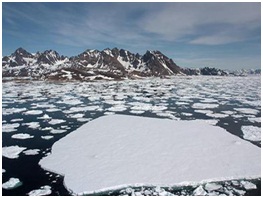
Source:
ASCI guidelines for promotion and advertisement of crypto, NFTs
- Context: The Advertising Standards Council of India (ASCI) has recently issued a 12 point guideline for the promotion and advertisement of crypto and non-fungible tokens (NFTs).
- The guidelines will be effective from April 2022.
- As per the guidelines,
- All virtual digital asset (VDA) products and services should carry the disclaimer stating that Crypto products and NFTs are unregulated and can be highly risky and that there may be no regulatory recourse for any loss from such transactions.
- Such disclaimers should be prominent and unmissable to an average consumer.
- Advertisements providing information on the cost or profitability of products should be made clear, along with an easy way for the consumer to contact the advertiser.
- Ads should not promise or guarantee profits, and should not compare VDA products with a regulated asset class, or depict minors in the ads.
- Other guidelines include prohibiting the use of words like currency, securities, custodian, and depositories in such advertisements.

Source:
- ASCI issues guidelines for promotion and advertisement of crypto, NFTs
- ASCI releases new guidelines for Non-Fungible Tokens, Crypto ads; here’s what experts have to say about it
Image source:
Mankading
- Context: The Marylebone Cricket Club (MCC) has recently announced its new code of laws under which Mankading has been made a normal mode of running out the non-striker.
- The basic meaning of Mankading is that a bowler can run out the non-striker batsman if he tries to step out of the crease when the bowler releases the ball.
- Often, batters on non-striker's end are seen stepping out of the crease well in advance as a headstart, to run between the wickets which is an unfair practice, and so, the bowlers tend to 'mankad' the batters while running them out.
- The term 'mankad' was coined after an Indian bowler in 1948when Indian legend Vinoo Mankad ran out Australian wicketkeeper Bill Brown at the non-striker's end.

Source:
- Explained: Why Mankading is no longer ‘unfair play’ in cricket
- DNA Explainer: What is 'Mankading' in cricket and did you know it was named after THIS Indian bowler?
Image source:
Arogya Vanam
- Context: The President has inaugurated the newly developed “Arogya Vanam” at the President’s Estate recently.
- Arogya Vanam has been conceived with the aim of publicising the importance of Ayurvedic plants and their effects on human organs.
- Its purpose is also to spread awareness so that guests coming to visit Rashtrapati Bhavan can become aware of the properties of various types of medicinal plants, their aroma and their importance.
- It is spread over 6.6 acres and is made in the shape of a human sitting in yoga posture (Arogya Manav).
- Along with it, there are fountains, a yoga platform, a viewpoint, water channels, a lotus pond, and a greenhouse.
- There are six flower beds in the shape of a peacock feather towards the head and feet of the Arogya Manav. The walking path measuring about 2 km has been made with red and white sandstone.
- The place is open to
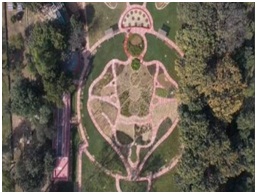
Source:
- At Rashtrapati Bhavan, a new attraction for visitors: Arogya Vanam
- President Kovind inaugurates Arogya Vanam to promote Ayurveda
Image source:
Village-level Entrepreneurship Programme
- Context: The Ministry of Rural Development (MoRD) and the National Institute of Entrepreneurship and Small Business Development (NIESBUD) have signed a memorandum understanding (MoU) to initiate the 'start-up village entrepreneurship programme' (SVEP).
- SVEP is a program to promote entrepreneurship at the grass root level with the aim to buildan inclusive society by providing equal opportunities to all along with the required financial support.
- It is a sub-component of Deendayal Antyodaya Yojana – National Rural Livelihoods Mission (DAY-NRLM) which aims to support entrepreneurs in rural areas to set-up enterprises at the village-level in non-agricultural sectors.
- The rural entrepreneurs will be able to access banking systems for receiving financial support for starting their enterprises, including support from MUDRA bank.
- Integrated ICT techniques and tools will also be provided for training and capacity building along with enterprise advisory services to augment the entrepreneurship ecosystem in India’s villages.
- The advantage of rural entrepreneurship is that:
- It can play a significant role in the overall economic development of India
- A huge number of employment opportunities can be generated for the rural community
- The old-age artistic heritagecan also beconserved by protecting as well as promoting the rural entrepreneurship
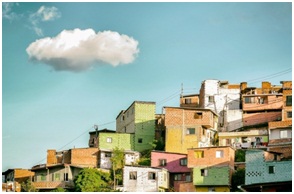
Source:
- Rural development ministry ties up with NIESBUD for village-level entrepreneurship programme
- Start-up Village Entrepreneurship Programme (SVEP) Launched To Support Entrepreneurs in Villages
Image source:
What ails medical education in India:IE
Essence: As per the author, there is demand supply mismatch, inadequate seats in terms of population norms, quality and affordability issues in the Indian medical education system. Students opting for a medical career either see this as a path to social and economic mobility or to continue the legacy of their doctor parents.
Indian medical education system suffers from faculty crunch, research journals of dubious quality, disregard for students’ welfare and high number of dental colleges. These issues have led to the entry of middlemen who paint a rosy picture of the medical education scenario in the foreign countries. As a result only 15% of the students pass the foreign medical graduate examination.
The authors says that the proposal by NITI Aayog to convert district hospitals in medical colleges under public private partnership is dangerous ideas. First the government needs to put in place a functional regulatory framework, and a good public-private model that serves the needs of the private sector as well as the country. Then, the government should consider subsidising medical education in the private sector for disadvantaged students and quality assessments of medical colleges should be regularly conducted.
Why should you read this article?
- To understand the issues with the Indian medical education system.
- To know about what needs to be done to overcome some of these issues.
Source:
Subsidy Raj holding back India’s economic progress: HBL
Essence: The article talks about how the diversion of money towards subsidies is curbing the growth of the country. The prospects of India coping up with after effects of Covid-19 also seems bleak due to Subsidy Raj. A combination of a medium rate of growth, limited job creation, and expansive operational subsidies works in favour of the political parties. Subsidy Raj holds back government investment in critical areas such as infrastructure, education and health facilities, and technology development. The effects of underinvestment are evidently visible in certain sectors like health, education, agriculture.
Covid- 19 has exposed fragilities that existed in the health and agriculture sector. Indian agriculture, which has progressed significantly over time, is now a mess due to the subsidies. Even after the support this sector remains low in productivity. The ill effects of lack of investment is coming up in educational sector also with none of our education system matching the world class standards. It is essential that people and politicians recognise that higher government investment is needed for higher growth and more jobs.
Why should you read this article?
- To understand the demerits of Subsidy raj.
- To understand the flaws that are coming up due to lack of appropriate investment in high growth areas.
- To understand why it is important for government to divert money from Subsidy Raj to investments.
Source:
Water management needs a hydro-social approach: TH
Essence: IPCC reports have pointed out that freshwater resources are under stress and human activities are largely responsible for this. Engineering of river channels, irrigation efficiency, land use changes, natural resource capacity and pollution are among the factors which influence water availability. Increasing the gap between demand and supply of freshwater will have not just economic effects but societal ramifications as well.
Since actions of multiple stakeholders affect water use, it is important to have in place a hybrid water management system where professionals, policy makers and members of society will come together to arrive at a solution.
Why should you read this article?
- To understand challenges in water management in India.
- To understand some challenges related to interlinking of rivers.
- To know about various initiatives and organizations related to water management. It is important for both prelims and mains.
Source:
A Police Station as a Ray of Hope
Background
Recently the GB Road Police Station of Delhi has been painted pink and turned into an attraction centre not just for the colour but the initiative taken up by the S.I of the station.

Police Station as makeshift training centre
- Swami Shradhanand Marg, famously known as GB Road is a red-light area.
- Respect and equality is the least that the people in such areas expect.
- The freshly painted pink police chowki has become a breathe of fresh air for this section of the society, as it provides them skills to merge with the outer world.
- Computer training and other vocational trainings are provided to the sex workers and their children, for them to pace up with the rest of the world.
- While some of them have showed enthusiasm in joining the training centre in the hope of getting out of this work, others are reluctant due to fear of rejection by society despite the training.
- Jobs are also organised for the trained members of the centre to keep up the enthusiasm.
- The Sub-Inspector Kiran Sethi is the putting all her efforts to make this centre a success.
Quote:“We come here to help them live a better life. But they refuse to believe that something like that is even possible.”- NGO worker
Source:
Share the article
Get Latest Updates on Offers, Event dates, and free Mentorship sessions.

Get in touch with our Expert Academic Counsellors 👋
FAQs
UPSC Daily Current Affairs focuses on learning current events on a daily basis. An aspirant needs to study regular and updated information about current events, news, and relevant topics that are important for UPSC aspirants. It covers national and international affairs, government policies, socio-economic issues, science and technology advancements, and more.
UPSC Daily Current Affairs provides aspirants with a concise and comprehensive overview of the latest happenings and developments across various fields. It helps aspirants stay updated with current affairs and provides them with valuable insights and analysis, which are essential for answering questions in the UPSC examinations. It enhances their knowledge, analytical skills, and ability to connect current affairs with the UPSC syllabus.
UPSC Daily Current Affairs covers a wide range of topics, including politics, economics, science and technology, environment, social issues, governance, international relations, and more. It offers news summaries, in-depth analyses, editorials, opinion pieces, and relevant study materials. It also provides practice questions and quizzes to help aspirants test their understanding of current affairs.
Edukemy's UPSC Daily Current Affairs can be accessed through:
- UPSC Daily Current Affairs can be accessed through Current Affairs tab at the top of the Main Page of Edukemy.
- Edukemy Mobile app: The Daily Current Affairs can also be access through Edukemy Mobile App.
- Social media: Follow Edukemy’s official social media accounts or pages that provide UPSC Daily Current Affairs updates, including Facebook, Twitter, or Telegram channels.


